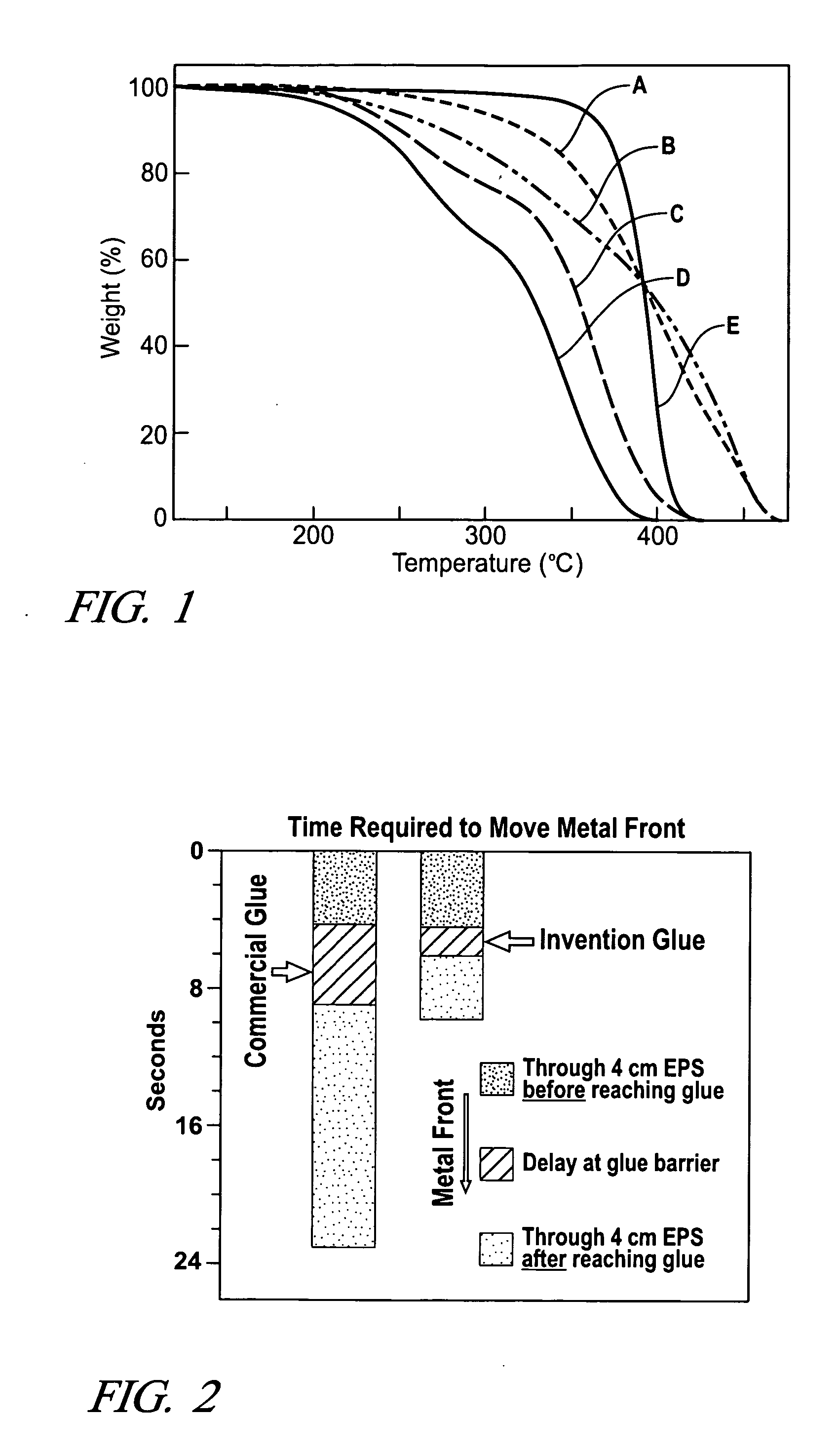Glued lost foam casting pattern assembly
a technology of glued foam and casting pattern, applied in the direction of foundry pattern, vinyl aromatic copolymer adhesive, foundry moulding apparatus, etc., can solve the problems of promoting localized heat loss, contributing to and associated formation of aforesaid casting defects, so as to reduce the formation of casting defects and limit the miscibility of resin
- Summary
- Abstract
- Description
- Claims
- Application Information
AI Technical Summary
Benefits of technology
Problems solved by technology
Method used
Image
Examples
Embodiment Construction
[0009] The invention involves expanded polystyrene (EPS) lost foam pattern assemblies having two or more segments bonded together with a glue that emulates the thermal degradation characteristics of the EPS so as not to impede the advancement of the melt front into the pattern any more than the EPS itself. To this end, the glue comprises an aromatic resin that (1) has a molecular weight (Mw) less than 10,000, (2) is derived from one, or from a mixture of several, aromatic monomer(s) of the type found in the C-9 aromatic fraction, and (3) thermally degrades as fast, or faster, than the EPS at the same temperatures and heating rates. Effective resins have been made by polymerizing a purified monomer such as styrene or methylstyrene, or mixtures thereof with each other, or with other C-9 type aromatic monomers. Indeed, effective glues have been made by polymerizing the C-9 aromatic fraction itself. Principle aromatic monomers commonly found in the C-9 aromatic fraction include styrene,...
PUM
| Property | Measurement | Unit |
|---|---|---|
| Temperature | aaaaa | aaaaa |
| Temperature | aaaaa | aaaaa |
| Percent by mass | aaaaa | aaaaa |
Abstract
Description
Claims
Application Information
 Login to View More
Login to View More - R&D
- Intellectual Property
- Life Sciences
- Materials
- Tech Scout
- Unparalleled Data Quality
- Higher Quality Content
- 60% Fewer Hallucinations
Browse by: Latest US Patents, China's latest patents, Technical Efficacy Thesaurus, Application Domain, Technology Topic, Popular Technical Reports.
© 2025 PatSnap. All rights reserved.Legal|Privacy policy|Modern Slavery Act Transparency Statement|Sitemap|About US| Contact US: help@patsnap.com


